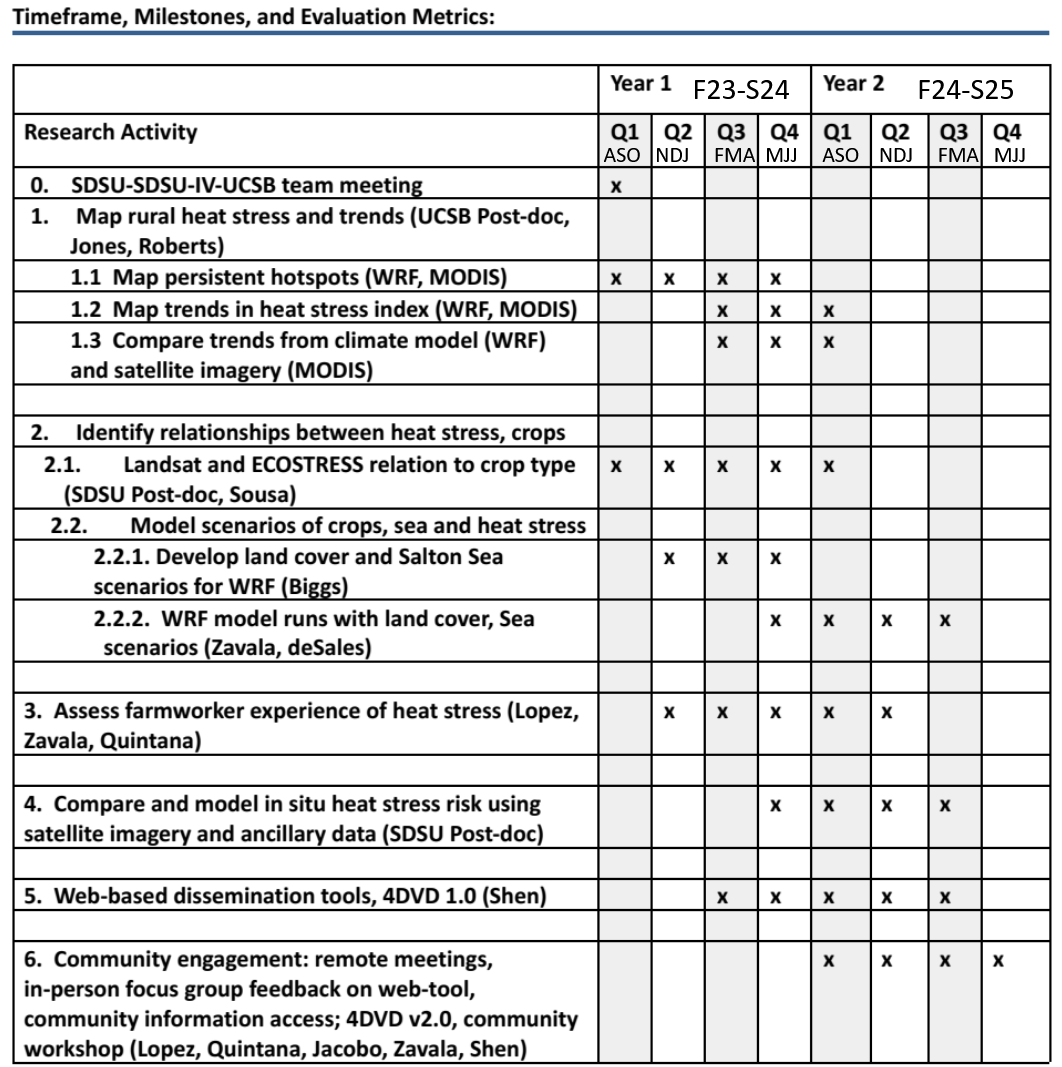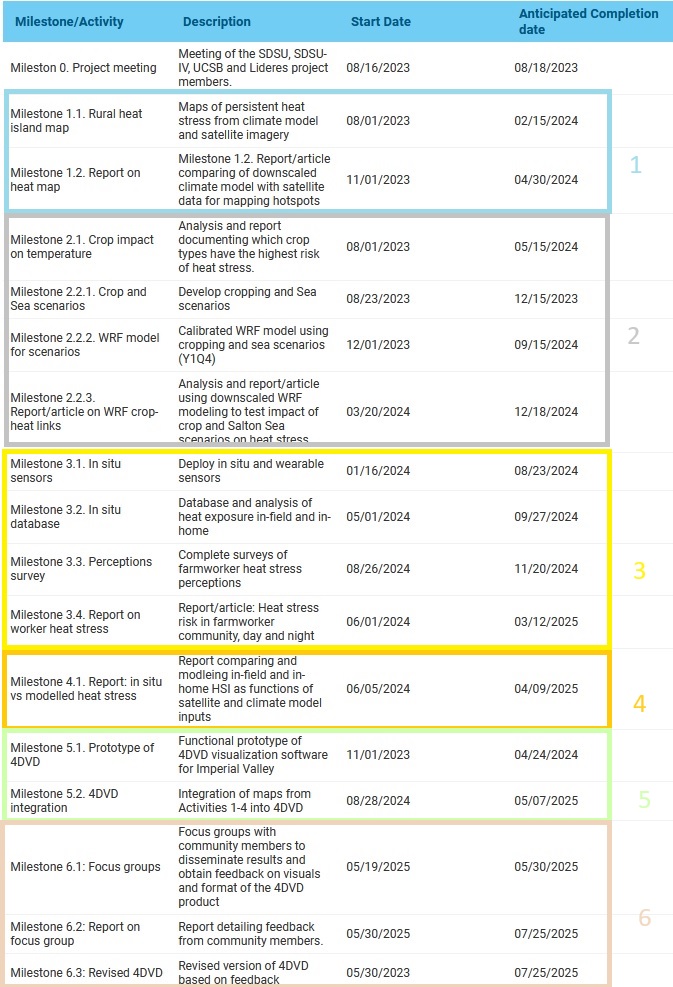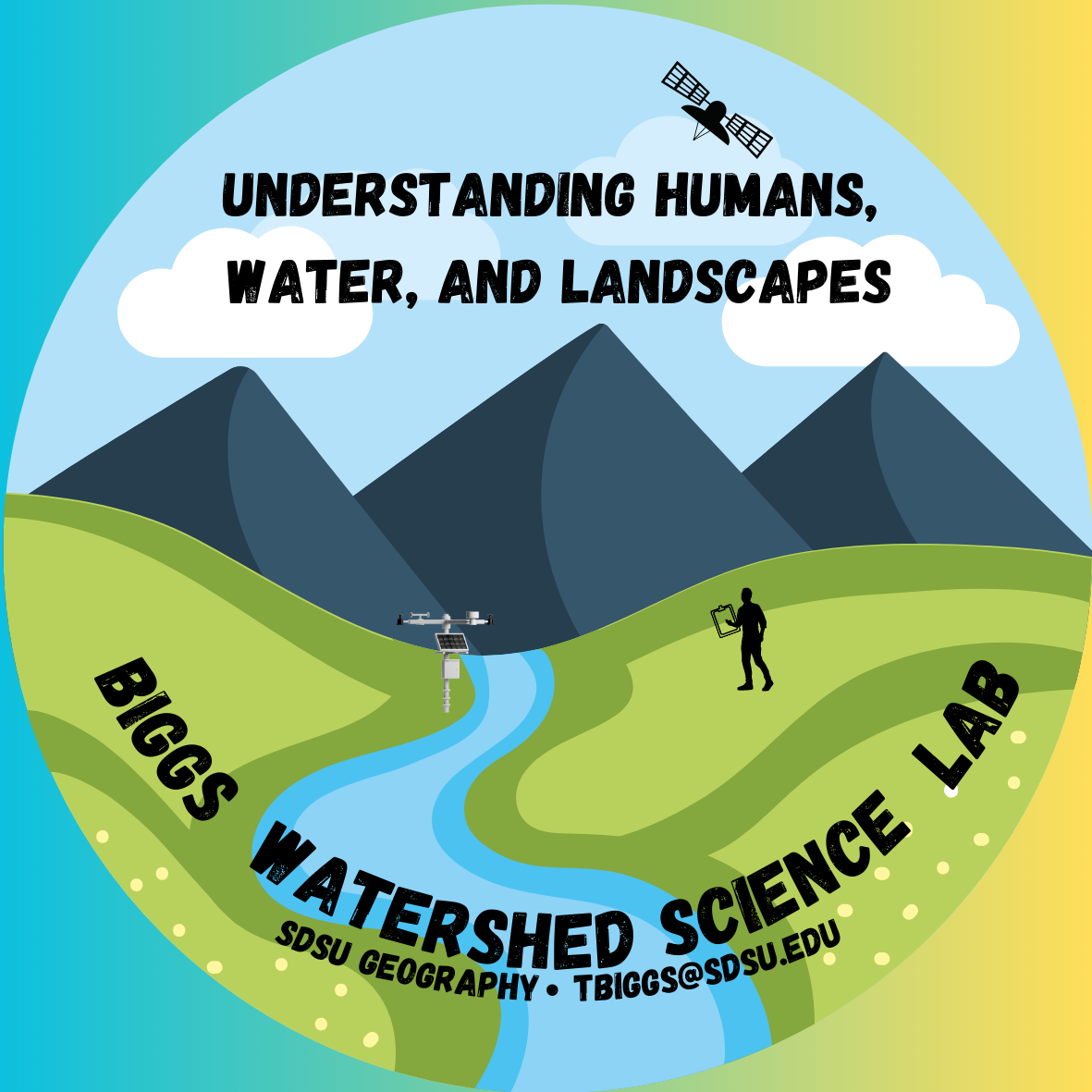Rural heat islands: Team Resources

Data products and metadata is here. (Shared drives\CA_rural_heat_island_noIRB\data\RHI Data Inventory.gsheet)
List of paper ideas is here.
Shared Drive references here.
4DVD mockup here.

Government links:
CAL Heat Assessment Tool (HEAT): https://www.cal-heat.org/explore
Imperial County Health Department Heat Surveillance Data here.
CalHeatScore EPA community information tool here. (to be launched in Jan 2025)
National Weather Service HeatRisk maps here.
CDC Heat and Health Tracker here.
Academic research teams
UCSD Southern California Extreme Heat Research Hub here.
UCSC Farmworker health group here. https://farmworkerhealth.ucsc.edu/ and app here.
Theses:
Morales, Gabriela. MS Thesis. https://storymaps.arcgis.com/stories/ce65fc0bf5db4bb3b07baf1865892055
Press:
2024-10-30: UCOP on Farmworker Health featuring Dr. Nicolas Lopez Galvez
2025-03-25: Mapping heat stress featuring Dr. Fernando de Sales
Presentations
UCSB Climate Group November 2024
